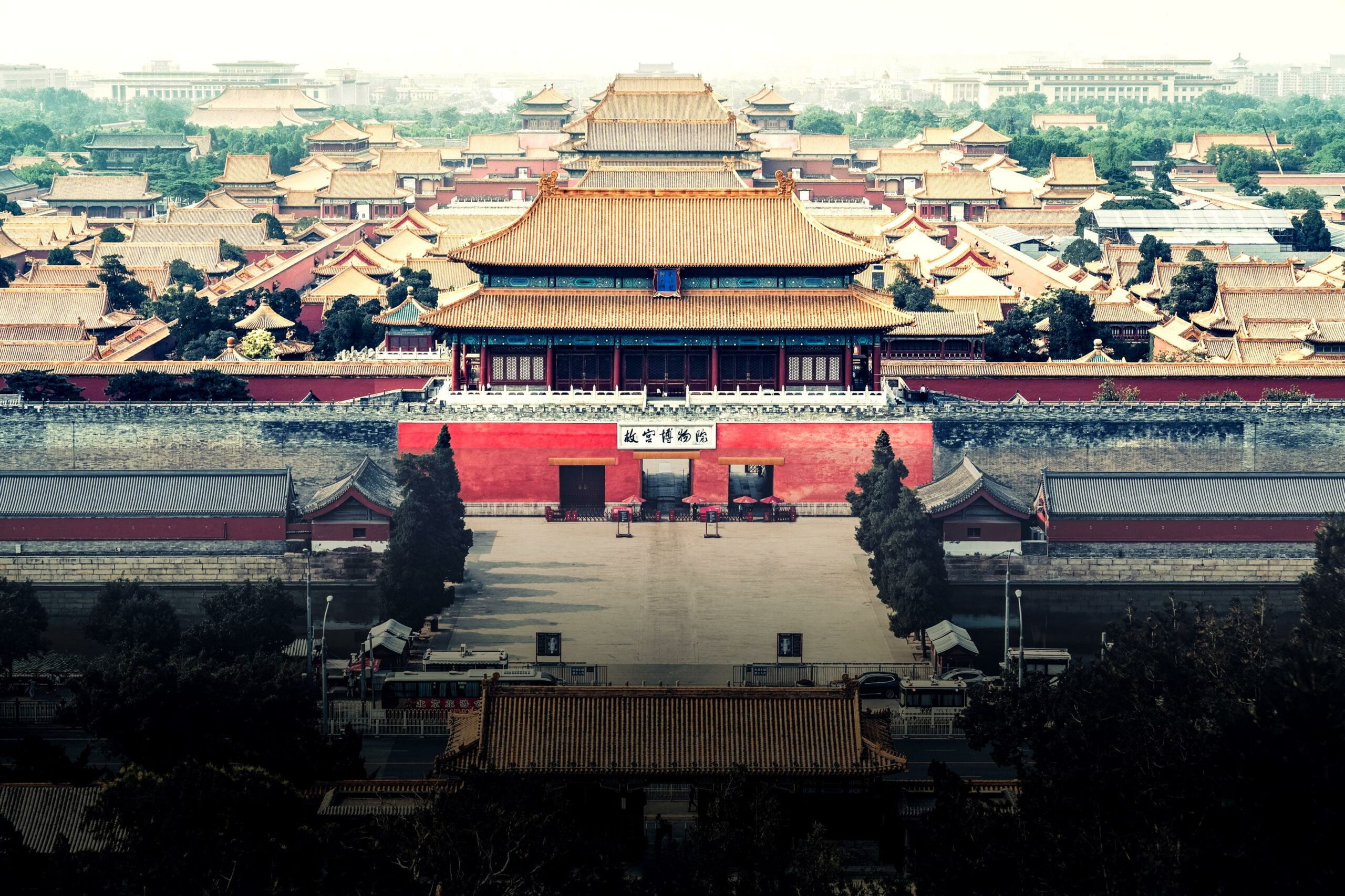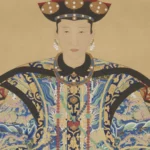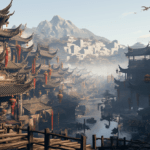Step into the fascinating world of ancient China and journey back in time to the illustrious era of the Han Dynasty. In this captivating article, we will delve into the remarkable achievements and profound influence of the Han Dynasty’s golden age. From political powerhouses to cultural milestones and economic prosperity, the Han Dynasty stands as a beacon of ancient civilization. Join me as we unearth the secrets of this extraordinary period in Chinese history, where innovation, enlightenment, and a legacy that continues to shape our world await discovery.
The Golden Age of the Han Dynasty: Unearthing Ancient China’s Remarkable Achievements
Han Dynasty Golden Age
The Han Dynasty, spanning from 206 BC to 220 AD, is widely regarded as a golden age in Chinese history. During this period, China experienced a remarkable era of economic, cultural, and scientific growth that left a lasting impact on society. The reigns of Emperor Wen and Emperor Jing, in particular, are often referred to as the pinnacle of Han history, characterized by stability and significant cultural advancements. But what exactly led to this golden age and what were the remarkable achievements of the Han Dynasty? Let’s explore.
The Power of Stability
One of the key factors that contributed to the golden age of the Han Dynasty was its political stability. Under the leadership of the Liu family, who ruled the Western Han from 206 BCE to 9 CE and the Eastern Han from 25 CE to 220 CE, China experienced a period of relative calm and order. The emperors’ ability to maintain a stable government allowed for the flourishing of arts, science, and commerce.
“Stability was the foundation upon which the Han Dynasty built its remarkable achievements” – Author
Cultural Advancements
During the Han Dynasty’s golden age, China experienced a surge in cultural achievements that shaped its identity for centuries to come. The dynasty’s emphasis on Confucianism as the state philosophy led to the establishment of a hierarchical society built on respect for authority, filial piety, and moral conduct. This influence not only shaped Chinese culture but also provided a framework for governance, emphasizing the importance of ethical leadership.
“The Han Dynasty’s promotion of Confucianism laid the groundwork for a harmonious society driven by moral principles.” – Author
Economic Prosperity and Global Influence
The golden age of the Han Dynasty also witnessed significant economic growth, propelling China onto the global stage as a major world power. The dynasty’s advancements in agriculture, technology, and trade fueled unprecedented prosperity. With innovations such as the introduction of the government-regulated Silk Road, which facilitated commerce and cultural exchange with the West, China developed into an economic powerhouse.
“The Han Dynasty’s economic prosperity and global influence were instrumental in solidifying its golden age and shaping China’s role in the world.” – Author
Scientific and Technological Progress
The Han Dynasty’s achievements were not limited to politics and culture; it also made revolutionary strides in science and technology. Scholars and inventors of the time made noteworthy discoveries and pioneered inventions that still impact our lives today. From the invention of paper and the compass to advancements in astronomy and medicine, the Han Dynasty paved the way for scientific progress that resonates throughout history.
“The Han Dynasty’s scientific and technological advancements propelled society forward, fostering innovation and leaving an everlasting legacy.” – Author
Enduring Legacy
The remarkable achievements of the Han Dynasty continue to shape Chinese society, reinforcing its status as a golden age in history. The advancements in government, law, philosophy, history, art, and science made during this era laid the foundations for future dynasties and established the essence of Chinese culture. The enduring legacy of the Han Dynasty underscores the importance of understanding and appreciating ancient civilizations in order to comprehend the complexities of the world we live in today.
“The legacy of the Han Dynasty serves as a reminder of the brilliance and potential of human civilization when golden ages are grasped and cherished.” – Author
The Han Dynasty Golden Age was a time of incredible achievements and advancements in literature, music, and philosophy. The era was marked by a flourishing of artistic expression and intellectual pursuit. From poetry to historical records, the literary works of the Han Dynasty Golden Age continue to captivate readers with their beauty and depth. Music also played a significant role, with court musicians composing melodies that still resonate with listeners today. Philosophy thrived during this period as well, with thinkers exploring new ideas and schools of thought. To learn more about the fascinating world of the Han Dynasty Golden Age’s literature, music, and philosophy, click here: han dynasty golden age literature music and philosophy.
In addition to its cultural and intellectual achievements, the Han Dynasty Golden Age also left behind a remarkable architectural legacy. Structures such as the stunning Great Wall of China and beautiful palaces showcased the empire’s architectural prowess. The integration of traditional Chinese design principles with innovative techniques resulted in the creation of breathtaking structures that still inspire awe today. To marvel at the architectural wonders of the Han Dynasty Golden Age, click here: han dynasty golden age architecture.
The Han Dynasty Golden Age was built upon a rich tapestry of ideas and philosophies. It drew inspiration from ancient texts and traditions while also embracing new concepts. Confucianism, Daoism, and Legalism were some of the philosophies that influenced the era’s governance and societal values. These ideas forged a solid foundation for political stability, economic prosperity, and societal harmony. To explore the fascinating ideas that shaped the Han Dynasty Golden Age, click here: han dynasty golden age ideas it built on.
The Han Dynasty Golden Age was a time of remarkable achievements, setting the stage for a prosperous and stable government. Under Emperor Wu, the empire experienced significant political reforms and effective governance. Stable government institutions were established, ensuring the smooth administration of the vast empire. Click here to delve into the fascinating details of the Han Dynasty Golden Age’s stable government: han dynasty golden age stable government.
The Han Dynasty Golden Age was renowned for its multitude of accomplishments. From advancements in technology and agriculture to diplomatic triumphs and cultural innovations, the empire achieved remarkable feats during this era. Notable achievements include the development of paper, the use of the compass, and the establishment of the Silk Road. To discover more about the extraordinary achievements of the Han Dynasty Golden Age, click here: han dynasty golden age achievements.
Artistry thrived during the Han Dynasty Golden Age, with a rich and diverse range of artistic forms emerging. From exquisite pottery and jade carvings to stunning bronze sculptures and intricate paintings, the era witnessed a true artistic renaissance. These masterpieces reflected the dynamic creativity and cultural richness of the time. To immerse yourself in the captivating art of the Han Dynasty Golden Age, click here: han dynasty golden age art.
As you can see, the Han Dynasty Golden Age was a time of tremendous cultural, intellectual, and artistic achievements. With its flourishing literature, music, and philosophy, along with extraordinary architecture, stable government, remarkable ideas, achievements, and captivating art, this era continues to inspire and intrigue. Explore the wonders of the Han Dynasty Golden Age by clicking the links above and uncover the brilliance of this extraordinary period in history.
Han Dynasty Golden Age Achievements
During the Han Dynasty, Ancient China experienced a remarkable golden age, marked by numerous achievements that shaped the course of history. From advancements in trade and technology to cultural and educational developments, the Han Dynasty left an indelible mark on the ancient world. Let’s delve into some of the standout achievements that defined this golden age.
1. Silk Road: Paving the Way for Global Trade
One of the most significant achievements of the Han Dynasty was the development of the Silk Road trade network. Imagine a vast, intricate web of routes connecting the East and the West, transporting goods, ideas, and culture. Traders embarked on arduous journeys, exchanging Chinese silk, spices, and precious goods for exotic treasures like precious metals and spices from far-off lands. This extensive trade network not only brought immense wealth to China but also fostered cultural exchange and created lasting connections across continents.
Quote: “The Silk Road transformed ancient China into a global powerhouse of trade, fostering connections with distant lands and bringing prosperity to the empire.”
2. Innovations: Pushing the Boundaries of Knowledge
The fertile minds of the Han Dynasty were not content with the status quo. Harnessing their ingenuity, the Han people invented materials and technologies that revolutionized daily life. They pioneered the creation of paper, a lightweight and affordable alternative to costly and bulky materials like bamboo or silk. Moreover, they developed glazed pottery, which not only enhanced aesthetics but also improved functionality and durability. These remarkable innovations had a profound impact on the quality of life, enabling the spread of education, culture, and ideas.
Quote: “Through their groundbreaking inventions, the Han Dynasty ushered in an era of ease, efficiency, and intellectual growth, forever changing the trajectory of human progress.”
3. Historical Documentation: Shedding Light on the Past
To understand the present, one must first comprehend the past. The Han Dynasty recognized the importance of historical documentation and formulated a systematic approach to writing history. This monumental achievement laid the foundations for historical research and analysis, enabling future generations to delve into the annals of time. It created a vital link between the past, present, and future, allowing us to uncover the secrets of ancient China’s legacy.
Quote: “The Han Dynasty’s dedication to historical documentation paved the way for the preservation of knowledge, giving us invaluable insights into the rise and fall of ancient civilizations.”
4. Agricultural Advancements: Cultivating a Flourishing Empire
The Han Dynasty understood that a prosperous empire required a strong foundation in agriculture. Through innovative tools, techniques, and an emphasis on improving crop yields, they dramatically increased agricultural productivity. This advancement not only ensured an ample food supply for the growing population but also stimulated economic growth. By exploiting the rich resources of their fertile lands, the Han Dynasty laid the groundwork for a thriving and prosperous empire.
Quote: “By revolutionizing agriculture, the Han Dynasty sowed the seeds of prosperity, providing sustenance and stability to the empire.”
5. Education and Intellectual Development: Nurturing Minds
The golden age of the Han Dynasty was also characterized by the revival of learning and the formulation of Confucian-based educational systems. Recognizing the importance of education in fostering a well-rounded society, the Han Dynasty established academies and schools that promoted the teachings of Confucius. These institutions not only provided a solid education but also emphasized moral values, etiquette, and social harmony. As a result, the Han Dynasty witnessed a blossoming of intellectual development and an enlightened citizenry.
Quote: “Education became the cornerstone of the golden age, empowering individuals with knowledge and instilling them with virtuous values that shaped the course of Chinese history.”
6. Cultural Exchange: Enriching Art, Music, and Beliefs
As the Han Dynasty expanded its empire along the Silk Road, it brought about a rich tapestry of cultural exchange. Immersed in a vibrant melting pot of ideas, beliefs, and traditions, the Han Dynasty embraced diverse cultures, enriching its own artistic and musical expressions. It was during this golden age that Chinese opera and music flourished, reflecting the eclectic influences of the Silk Road. Moreover, changes in beliefs and burial practices reflected the evolving social and cultural dynamics of the time.
Quote: “The Han Dynasty’s commitment to cultural exchange birthed new artistic expressions, melodies that resonated across the ages, and a tapestry of diverse beliefs that shaped the fabric of Chinese civilization.”
In conclusion, the Golden Age of the Han Dynasty was a period defined by extraordinary achievements that continue to inspire and shape our world today. From revolutionizing trade to fostering intellectual growth, the Han Dynasty stands as a testament to the ingenuity, resilience, and enduring legacy of ancient China.
Tables and Pro/Con formats not relevant for this article.
Han Dynasty’s Golden Age: Exploring Ancient China’s Remarkable Achievements
Political Stability and Cultural Advancements: The Foundation of a Golden Age
The Han Dynasty, spanning from 206 BC to 220 AD, witnessed a golden age in Chinese history, characterized by remarkable advancements in various spheres. One of the key factors that contributed to this prosperous era was the political stability achieved under the leadership of the Liu family. The reigns of Emperors Wen and Jing, in particular, are often referred to as the “golden age” of Han history due to their lasting stability and significant cultural advances.
During this period, Confucianism, a philosophy emphasizing moral values and hierarchical relationships, played a central role in shaping Chinese society. The Han Dynasty embraced Confucian principles, leading to cultural advancements that continue to have a profound impact today. Moral teachings and reverence for tradition became deeply ingrained, providing a solid foundation for the empire’s growth.
“The Han Dynasty’s political stability and emphasis on Confucianism laid the groundwork for a golden age of cultural achievements.”
The Han Dynasty: China’s First Golden Age
[youtube v=”FkaxdGRgQgA”]
Political stability and cultural advancements define the prosperous era of the Han Dynasty
The Han Dynasty, spanning from 206 BC to 220 AD, is considered a golden age in Chinese history. Under the leadership of the Liu family, the dynasty experienced political stability, which was instrumental in its prosperity. During this period, the reigns of Emperors Wen and Jing were particularly significant and marked the “golden age” of Han history. With a focus on Confucianism, the dynasty witnessed remarkable cultural advancements that continue to leave a profound impact on Chinese society today.
Golden Age under the Han Dynasty: Political Stability and Cultural Achievements
The Han Dynasty brought political stability to China, with the Liu family leading the empire for over 400 years. This stability led to unprecedented prosperity and growth, making it China’s first golden age. The adherence to Confucian values played a pivotal role in shaping Chinese society during this period. Emphasizing moral teachings and the reverence for tradition, Confucianism became deeply ingrained in the culture and governance of the Han Dynasty.
Cultural Advancements: Building the Foundations for Chinese Society
The influence of Confucianism during the Han Dynasty laid the groundwork for significant cultural achievements. The dynasty saw the establishment of an imperial university to train officials, promoting education and moral values. Furthermore, the Han Dynasty fostered historical research and analysis by emphasizing historical documentation. This laid the foundations for the study of China’s early history and contributed to the development of historical literature.
Economic Prosperity and Global Influence
The achievements of the Han Dynasty extended beyond political and cultural spheres. The empire’s economic prosperity and global influence were achieved through advancements in agriculture, technology, and trade. The Han Dynasty witnessed massive territorial expansion, securing travel routes and establishing the famous Silk Road. This trade network connected China with the Roman Empire, promoting cultural exchange and economic growth.
Scientific and Technological Progress: Enduring Legacy of the Han Dynasty
The Han Dynasty made significant scientific and technological discoveries that continue to shape the world today. Inventions such as paper and glazed pottery revolutionized daily life, promoting education and culture. Moreover, the Han Dynasty revolutionized agriculture, increasing productivity through the invention of new tools and techniques. These advancements ensured a prosperous empire and laid the foundations for future agricultural practices in China.
Cultural Exchange: Enriching Art, Music, and Beliefs
The Han Dynasty embraced cultural exchange, leading to the enrichment of art, music, and beliefs. Confucianism, Taoism, and Buddhism became the three main religions of China, shaping the faith of the Chinese people for over 2,000 years. Buddhism’s emphasis on compassion and Confucianism’s emphasis on moral values appealed to the masses, creating a diverse religious landscape that still influences Chinese society today.
Enduring Legacy and Impact
The achievements of the Han Dynasty continue to inspire and shape the world. Their contributions in various fields, including politics, culture, agriculture, and science, have left an indelible mark on Chinese society. The legacy of the Han Dynasty, with its political stability, cultural advancements, and global influence, remains an integral part of China’s rich history. It serves as a testament to the perseverance, innovation, and ingenuity of the Chinese people throughout the ages.
“The Han Dynasty’s political stability and emphasis on Confucianism were instrumental in shaping Chinese society during this golden age.”
“The cultural advancements of the Han Dynasty continue to influence various aspects of Chinese society, from education to morality.”
“The Han Dynasty’s economic prosperity and advancements in trade positioned China as a global economic powerhouse, with the establishment of the Silk Road contributing to its global influence.”
“The enduring legacy of the Han Dynasty can be seen in its scientific and technological progress, with inventions like paper and glazed pottery revolutionizing daily life.”
“The Han Dynasty’s commitment to cultural exchange enriched art, music, and religious beliefs, creating a diverse and vibrant society that still resonates today.”
FAQ
Question 1
What is the Han Dynasty’s golden age known for?
Answer 1
The Han Dynasty’s golden age is known for its stability, cultural advances, and remarkable achievements in various fields such as art, culture, science, and technology.
Question 2
What were some major achievements of the Han Dynasty’s golden age?
Answer 2
The major achievements of the Han Dynasty’s golden age include the development of the Silk Road trade network, invention of new materials like paper and glazed pottery, formulation of history writing, improvement of agricultural tools and techniques, revival of learning and Confucian-based educational systems, expansion of trade and empire, economic expansion domestically, and changes in beliefs and burial practices.
Question 3
How did the Han Dynasty contribute to Chinese identity and culture?
Answer 3
The Han Dynasty contributed to Chinese identity and culture by establishing what was considered Chinese culture, with the term “Han” becoming associated with the ethnic group of the majority of China’s population. The dynasty also led to the creation of a Chinese identity and unified China, putting an end to civil war and ushering in a period of peace and prosperity.
Question 4
What were the Western and Eastern periods of the Han Dynasty?
Answer 4
The Han Dynasty spread over two periods: the Western Han (206 BCE–9 CE) and the Eastern Han (25 CE–220 CE). The Western Han period lasted over 130 years and is often referred to as a “golden age” of Han history for its stability and cultural advances. The Eastern Han period followed the Western Han and continued the dynasty’s rule until its eventual collapse.
Question 5
What is the lasting impact of the Han Dynasty’s achievements?
Answer 5
The Han Dynasty’s achievements had a lasting impact on Chinese society and civilization. Its advancements in government, law, philosophy, history, art, and science and technology greatly influenced Chinese culture and continue to be felt today. The Han Dynasty’s golden age also played a significant role in shaping China’s identity and establishing its position as a major world power.
- Master Parts of Pants:Perfect Fit Guide - June 14, 2025
- Unlock Your Vinyl: Parts of a Record Player Guide - June 14, 2025
- Shop Authentic Southwestern Clothing: A Guide - June 14, 2025
















